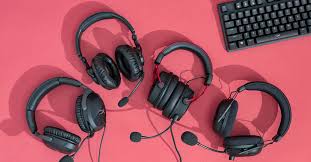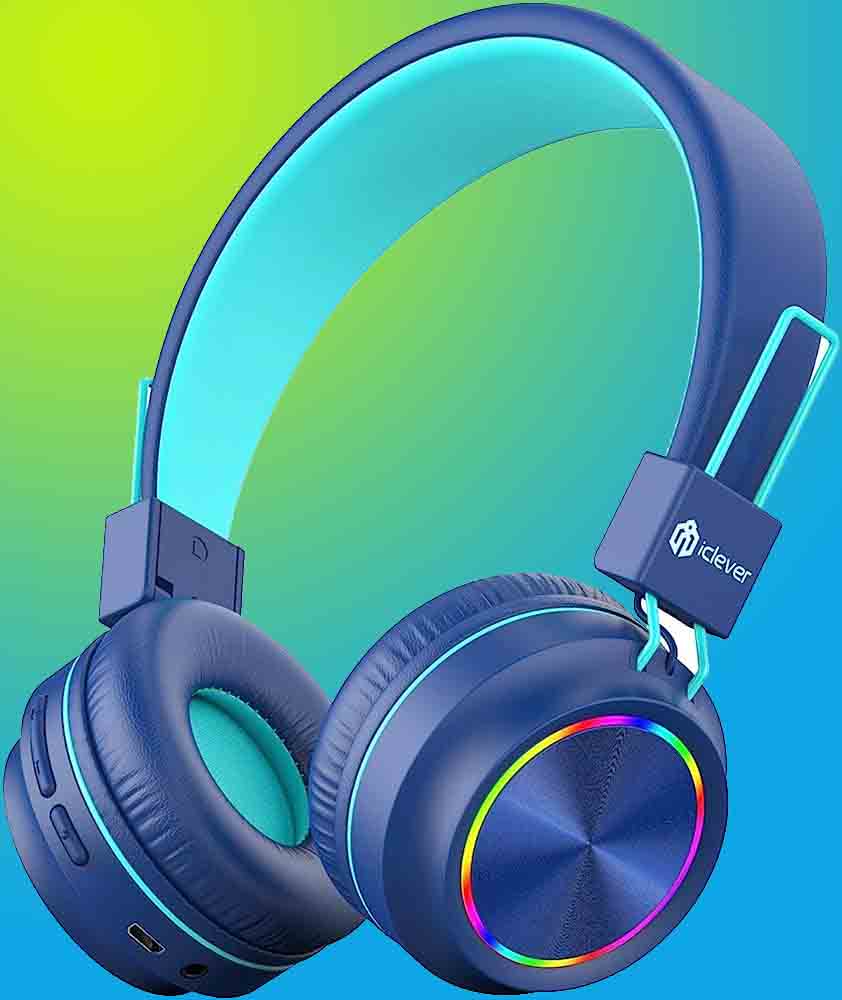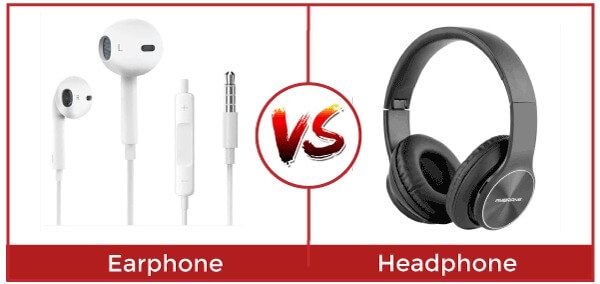Headphones are hardware devices that can be connected to a computer, laptop, smartphone, MP3 player, or other device to listen to audio without disturbing anyone nearby. They are plug-and-play devices that do not require installation before use. Headphones are also known as in-ear headphones or headphones, depending on the style.
Introduction
Headphones are a pair of small speakers that are used to listen to audio from a computer, music player, or other similar electronic device. Headphones originally consisted of a speaker for each ear connected by a hairband. While this style is still used today, modern headphones also come in a much smaller size that fits over the ear and is commonly referred to as a headphone. Modern headphones can be wireless or wired.
The earphones, unlike speakers, are designed to produce a sound that everyone around you can hear. The first headphones, first manufactured by the USNavyin1910, were simple and used as headphones without complicated electronics.
Type of Headphones
- In-ear – earphones that fit snuggly in your ear canal; typically contain rubber ends that help give them a secure fit.
- Earbuds – earphones that rest inside the edge of your ear; often included with smartphones and portable media players.
- On-ear – headphones that rest on your ears but don’t encompass the whole ear; help isolate outside sounds.
- Over-ear – headphones that wrap around your ears; also called “around-ear” or “circumaural” headphones; come in open and closed versions. Open versions allow all outside noise, while closed versions limit external sounds.
- Noise-canceling – creates an extra quiet listening environment by canceling outside noise; contains a microphone that detects external sounds and sends the opposite waveform to your ear to “cancel” the noise; available in all types of form factors.
History
Headphones were born with the need to free people’s hands when using the phone. There are several products that repeat the forerunner of the “hands-free” headset. In the 1890s, the first device that was unmistakably headphones was manufactured by a British company called Electrophone, which created a system that allowed its customers to tune into performances. live at theaters and opera houses across London. Subscribers to the service can listen to the performance through a pair of giant headphones that are connected under the chin, held in place by a long stem.
French engineer Ernest Mercadier patented a set of in-ear headphones in 1891, Mercadier was granted US Patent No. 454,138 for “improvements in telephone receivers… light enough… so that the operator can carry it when in use.

Nathaniel Baldwin of Utah 1910 invented a prototype telephone headset because he couldn’t listen to Sunday worship sermons. He offered to test it for the US Navy, which quickly ordered 100 from Baldwin. Wireless Specialty Apparatus Co., in partnership with Baldwin Radio Company, established a production facility in Utah to fulfill orders. His innovations were the basis of the “sound-powered” or powerless telephone, used during the Second World War.
Headphones are derived from telephone receiver headphones and were the only means of listening to electrical audio signals before the development of amplifiers.
These first headphones used moving iron conductors, with either asymmetrical or balanced armatures. The common one at one end uses a voice coil wound around the poles of a permanent magnet, placed near a ductile steel diaphragm.
Anacoustic current passing through the coil changes the magnetic field of the magnet, applying a varying force to the diaphragm, causing it to vibrate, creating sound waves. The high sensitivity requirement means no damping is used, so the frequency response of the diaphragm has large peaks due to resonance, resulting in poor sound quality. These early models lacked padding and were often uncomfortable to wear for long periods of time.

Their impedances are different; headsets used in telegraph and telephone work have an impedance of 75 ohms. Those used with early wireless radios had more thin loops of wire for increased sensitivity. Impedances of 1000 to 2000 ohms are common, suitable for both crystal and triode collectors. Some highly sensitive headphones, such as those made by Brandes circa 1919, were commonly used for early radio work.
In early radios, the headphones were part of the vacuum tube plate circuit and carried dangerous voltages. It is usually directly connected to the positive terminal of a high-voltage battery, and the other terminal of the battery is firmly grounded. The use of bare electrical connections means that users may receive an electric shock if they touch the bare headphone connections while adjusting an uncomfortable headset.
In 1958, John C. Koss, a jazz musician and dau audiophile from Milwaukee, produced the first stereo headphones.
Smaller, in-ear style headset that plugs into the user’s ear canal, first developed for hearing aids. They were widely used with transistor radios, entering commercial use in 1954 with the introduction of the Regency TR-1. The most popular audio device in history, the transistor radio changed listening habits, allowing people to listen to the radio anywhere. Headphones use moving iron conductors or piezoelectric crystals to produce sound. 3.
The 5 mm radio and telephone connector, most commonly used in mobile applications today, has been used at least since the Sony EFM-117J transistor radio, released in 1964. Its popularity was boosted by its use on portable Walkman players. tape recorder in 1979.
Benefits and limitations
Headphones can prevent others from hearing sounds, maintain privacy, or avoid disturbing others, such as when listening in a public library. They can also provide a higher level of audio fidelity than similarly priced speakers. Part of their ability to do this comes from not having to do room correction processing with the headphones.
High-quality headphones can have an extremely flat low-frequency response down to 20 Hz at less than 3dB. While speakers must use relatively large drivers (usually 15″ or 18″) to reproduce low frequencies, headphones can accurately reproduce bass and low frequencies with drivers only as wide as 40 to 50mm (or much smaller, as is the case with in-ear headphones). The headphones’ impressive low-frequency performance is possible because they’re so close to the ‘sears that they only need to move a relatively small amount of air.
Commercial claims such as “frequency response 4 Hz to 20 kHz” are often exaggerated; Product response at frequencies below 20 Hz is generally very poor. Headphones are also useful for video games that use 3D positional sound processing algorithms, as they allow gamers to better judge the location of off-screen sound sources (such as the footsteps of a player). opponents or their gunfire).

Although modern headphones have been sold and used specifically for listening to stereo recordings since the release of the Walkman, there is some subjective debate about their stereo reproduction nature. The stereo recording represents the position of the depth signal horizontally (stereo separation) through the volume and phase difference of the audio in question between the two channels.
When the sounds from two speakers mix, they create a phase difference that the brain uses to determine direction. In most headphones, since the right and left channels do not combine in this way, the ghost center illusion can be lost. The hard-cut sound is also heard only from one ear, not the other.
Binaural recordings use a different microphone technique to encode direct direction as phase, with little difference in amplitude below 2 kHz, often using a dummy. They can create an amazing realistic spatial impression through headphones. Commercial recordings almost always use stereo sound rather than binaural recording, as listening through speakers is more common than listening through headphones.
The spatial effects of headphone stereo can be modified, for better estimation of speaker reproduction presentation, by using a frequency-dependent cross-over feed between channels.
Headsets can have ergonomic advantages over traditional handsets. They allow operators to maintain better posture without having to hold the phone in their hand or tilt their heads to the side to hold it.
Connectivity
Wired: headset with soldered headphone jack cable.
Wireless: Wireless earbuds. Usually has a built-in headphone jack. Wireless earbuds. Usually has a built-in headphone jack. Wireless headphones connected via neckband.
True wireless: The True wireless headphones have no wires to keep each earbud connected. They rely on wireless technology like Bluetooth to transmit audio from hardware devices.
Difference between Earphone and Headphone
Headphones and earphones are used for listening to audio. They are commonly used nowadays as they offer lots of benefits. They provide privacy to the user, which means that surrounding people are not able to hear the audio that the user is listening to. They are used for listing songs, speaking on calls, watching videos, etc. The quality of audio and other functionalities may vary company-wise or brand-wise. Besides this, both earphones and headphones can be used while doing work, jogging, walking, playing, and performing any type of activity.

Earphone
It is used to listen to sound. It has two speakers and a microphone. They are worn by gently tucking into the ears but cannot cover the ears completely. They are small in size. They are lightweight, which means they weigh less and are easy to carry. The headset has silicone rubber for user comfort. The characteristics of the headset are different depending on the brand. The brand also offers different colors of headphones.
When using headphones, ambient noise cannot be muted, so a person cannot hear clearly. So you can increase the volume to hear clearly, but high volume will not be good for the ears.
Headphones
It is used for listening to audio. It also comes with two speakers and one mic. Headphones are big in size and have soft cushions that provide comfort to users. The rounded shape fiber belt is called a headband that comes overhead. Some headphones provide an adjustable head belt. They are difficult to carry because they occupy more space and are not lightweight.
The functionality of headphone may vary according to the brand; some headphone has an SD card slot, FM, playing button, etc., and some headphones do not contain these features. The user can buy headphones of his favorite color as brands offer the headphones in different colors like back, blue, white, etc.
For health, headphone is a thousand times better than earphones. While using the headphone, it cuts the surrounding noise. The person can hear clearly at low volume also, and there is no need the increase the volume to hear clearly. They also cover the whole ear as they are big in size.
| Earphone | Headphone |
|---|---|
| It is worn in-ear. | It is worn over-ear. |
| Earphones do not cut the surrounding noise. | Headphones cut the surrounding noise. |
| It is small in size. | It is large in size. |
| It is lightweight. | It has more weight than earphones. |
| It is easy to carry. | It is difficult to carry. |
| Silicon rubbers are used for earphones to provide comfort to the ear. | Silicon rubbers are used for earphones to provide comforts to the ear. |
| For the ear, it is less healthy than headphones. | For the ear, it is healthier than earphones. |
Computer – KnowledgeSthali

